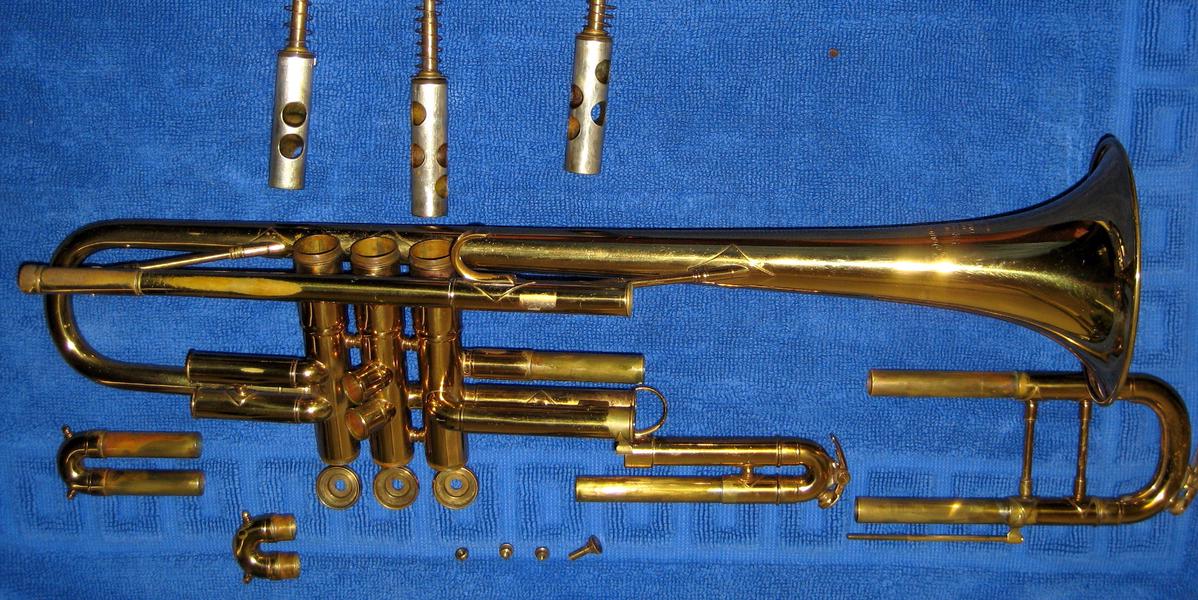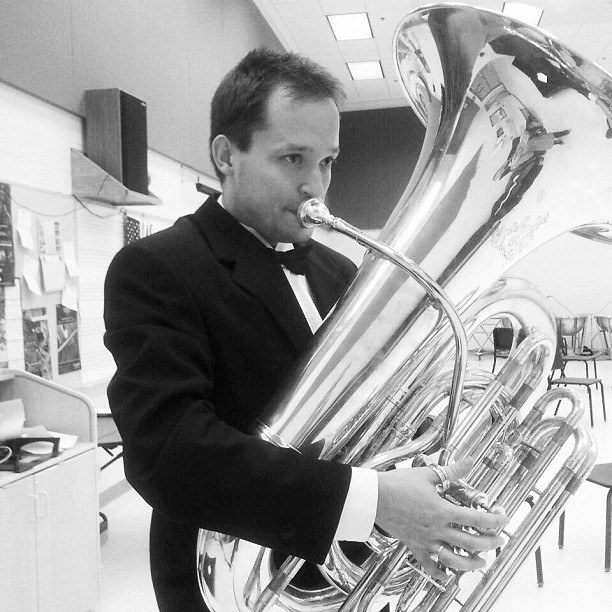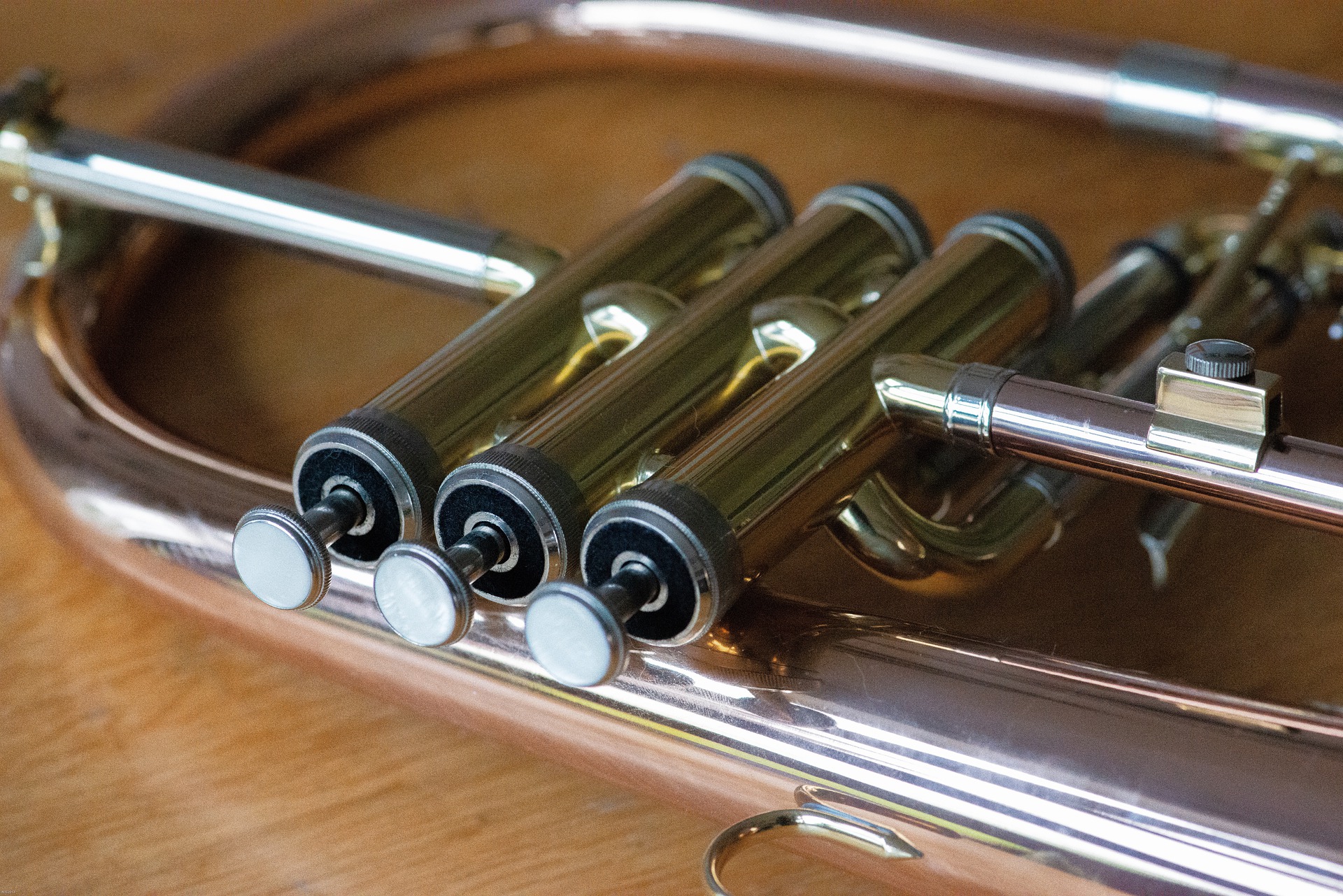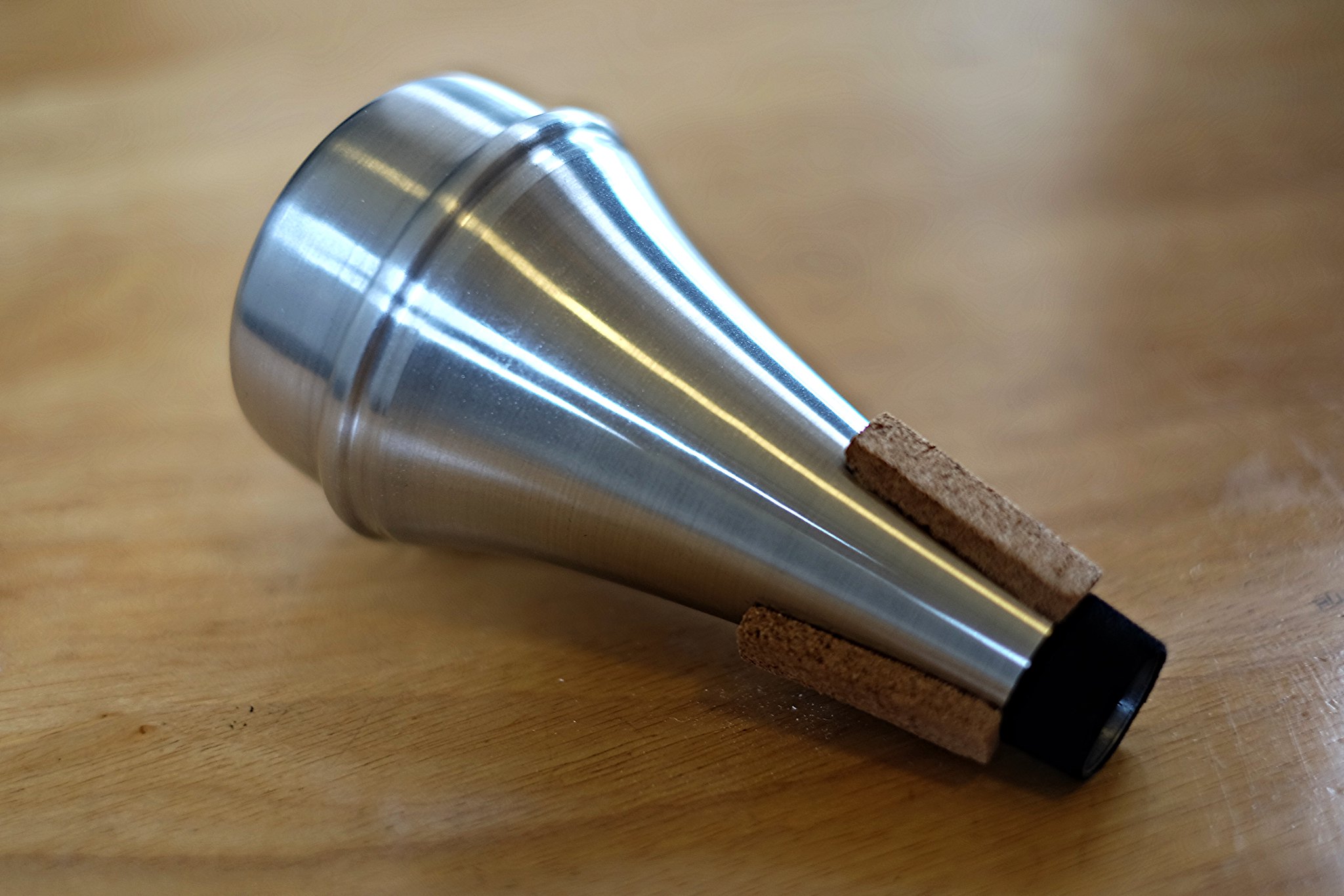You can think of a trumpet as a machine that has underlying trumpet parts or components that work in conjunction with one another to make the machine operate. The good news is that these parts are typically modular, meaning, if you have one part that breaks, you can often replace that one part without having to purchase a new instrument.
Let's learn about the different trumpet parts and how they work.
Mouthpiece
As you probably are well aware, the mouthpiece is the part of the instrument that we buzz on to produce sound. The mouthpiece directs our airflow into the instrument. The trumpet mouthpiece itself has its own anatomy, including the rim, cup, throat, and backbore. Learn more about beginning trumpet mouthpiece selection, and what we recommend for a high range screamer trumpet mouthpiece.
Mouthpiece receiver
The mouthpiece receiver connects the shank of the mouthpiece to the leadpipe of the trumpet. It's important to gently insert and slightly twist the trumpet mouthpiece into position in the receiver or you can end up getting your trumpet mouthpiece stuck.
Leadpipe
This is the long, skinny tube that extends from the mouthpiece receiver to the main tuning slide of the trumpet. It's really important to take care that no damage affects the leadpipe. This is a particularly sensitive area to the trumpet, and even smaller dents can be responsible for negative changes in tone quality and intonation.
On most standard trumpets, the leadpipe is permanently stationed in-place. While substitutions can be made by a professional trumpet repair person, it's usually not something that's adjustable.
On the other hand, detachable or adjustable leadpipes are much more common with other types of trumpets like flugelhorns and piccolo trumpets. In some cases the leadpipe is used to change the overall key of the instrument, while in others it functions as the main tuning slide of the instrument usually due to the overall design and functionality of the instrument.
Tuning and valve slides
There are four tuning slides on the trumpet, one main tuning slide, accompanied by one valve slide for each of the valves. The main tuning slide is responsible for setting the core tuning of the instrument. This can be adjusted on-the-fly by the trumpet player to accommodate different variables like temperature that may be affecting the trumpet tuning.
The additional valve slides are responsible for micro-adjustments that might need to be made to individual pitch tendencies caused by certain valve combinations. It's important to clean and maintain these surfaces to prevent getting a trumpet slide stuck.
Valves
Most standard Bb trumpets in the U.S. utilize piston valves, although many European instruments prefer rotary valves. By pushing the valves down in different combinations, this allows the air to move through longer tubing, thus changing the pitch. This is why you'll see those holes in the bottom of the valves. When they're pushed down or raised, they'll align with different slides of the instrument.
Each of the three piston valves are unique, so you'll need to ensure that they go in the correct valve casing, or the instrument will feel like it's "stopped up," and you won't be able to produce a sound.
Trumpet players are lucky in the fact that it really doesn't take too much work to care and maintain their instruments, but it's important that they regularly use trumpet valve oil to lubricate the pistons and make sure they can move freely.
Valve casings
These are the three cylinders that the piston valves are inserted into vertically. Cleaning the casings and making sure they don't get scratched up will help the pistons move smoothly.
Water key
Affectionately referred to as the "spit valve", these typically sit on the main tuning slide and third valve slide and allow the trumpet player to blow out moisture that has collected inside of the trumpet. When the key is pressed down, the player can blow air forcefully into the mouthpiece and give the trumpet a slight shake to let the moisture out.
There is usually a small rubber or felt stopper that seals the space between the water key and the hole in the tuning slide. This is necessary so that air does not escape while the instrument is being played. If this becomes compromised, it's a cheap and easy fix to get a replacement disc.
Rings and hooks
On the top of the trumpet is a hook or ring designed for the right hand pinky. Most trumpet professors prefer you rest your pinky on top of the hook rather than in the hook during most practice and performance situations. That's because it can become too easy to absentmindedly apply pressure to one's embouchure if you pull the trumpet inwards against your face.
The hook can be helpful, however, for situations like page turns and mute changes, allowing you to still hold and operate the trumpet with a single hand.
The ring on the third valve slide and ring or thumb saddle on the first valve slide allow for easier manipulation of the slides while playing. Players have easier control to be able to adjust for specific pitch tendencies on-the-fly.
Bell
The bell of the trumpet is at the end of the instrument and where the sound is emitted. The flare of the bell can contribute to the quality of its sound; smaller flared bells tend to have a brighter tone quality, while larger flares are associated with mellower sounds. Due to the flare and sheer size of the bell, it is often created as a separate piece of metal from the rest of the instrument and soldered into place.
Most modern Bb piston trumpets are very similar in their overall construction. Instruments can be customized based on qualities like bore size, finish of the instrument, flare of the bell, valve material, alloys in the metal, but there is very little deviation around the actual parts of the trumpet.




